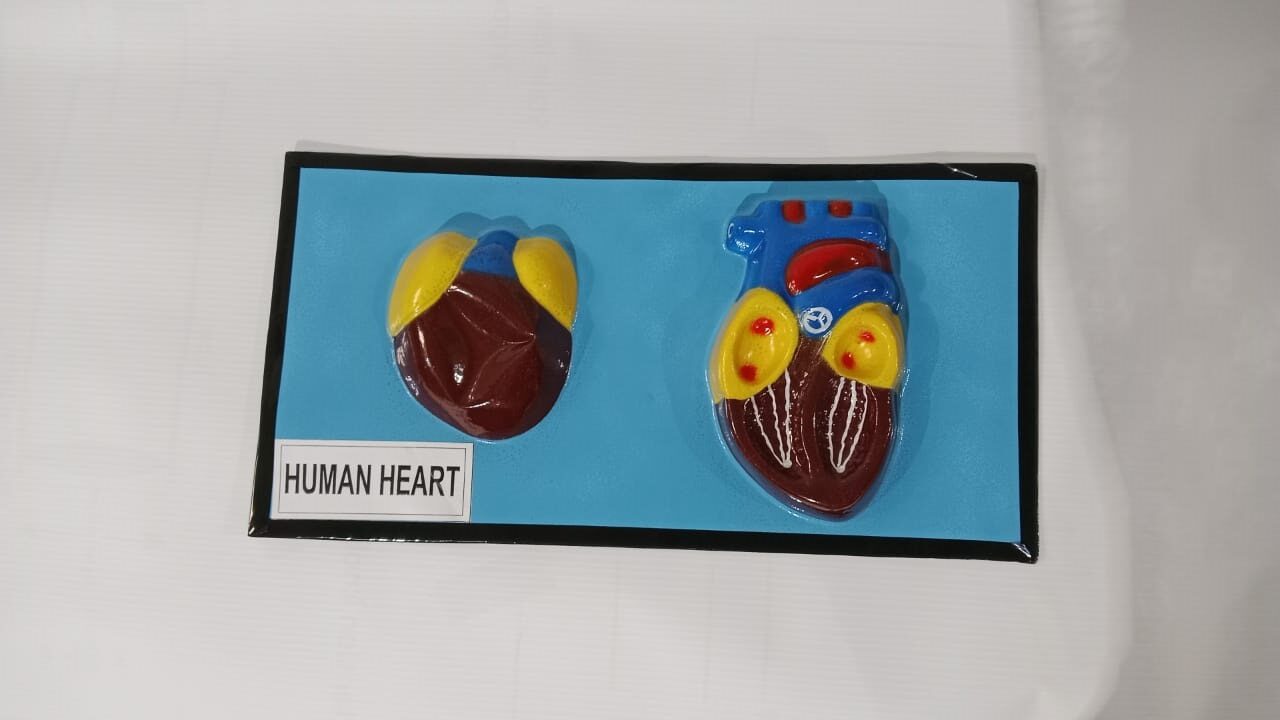Human Heart Model for School Project
Introduction
Understanding the human heart is a key part of science education. A human heart model for school projects offers a hands-on way to explore how this vital organ works. Whether you are preparing for a science fair, a classroom assignment, or a biology demonstration, a well-designed heart model can make learning more interactive and memorable.
In this guide, we will explain everything about using and creating a human heart model, including its structure, uses, how to draw it, and why it is important for students.
Importance of a Human Heart Model in School Projects
A human heart model provides a visual and physical representation of the heart’s anatomy. Instead of just reading about the heart in textbooks, students can actually see and feel the different parts like the ventricles, atria, valves, and arteries.
Here are a few reasons why using a human heart model is essential:
- Better Understanding: Helps students visualize blood flow, oxygen exchange, and heart function.
- Interactive Learning: Models engage multiple senses, making it easier to remember.
- Hands-On Experience: Students learn better through activities rather than only theory.
- Presentation Skills: A detailed model enhances school presentations, science exhibitions, and project reports.
Features of an Ideal Human Heart Model for School Projects
When selecting or making a human heart model, consider these important features:
- Realistic Design: Should represent the actual anatomy of a human heart.
- Color-Coding: Different parts like arteries and veins should be color-marked.
- Durable Material: Made from plastic, foam, or clay for long-lasting use.
- Detachable Parts: Some models allow parts to be separated for deeper understanding.
- Easy to Label: Clear labeling for valves, chambers, and blood vessels is crucial.
How to Use a Human Heart Model for a School Project
To create a successful school project using a human heart model, follow these steps:
1. Understand the Basics
Before starting, study the basic structure of the human heart:
- Four Chambers: Right atrium, right ventricle, left atrium, and left ventricle.
- Major Blood Vessels: Aorta, pulmonary arteries, pulmonary veins, and vena cava.
- Valves: Tricuspid, pulmonary, mitral, and aortic valves.
2. Prepare Your Presentation
Your project should answer these key points:
- How does the heart pump blood?
- What is the role of each chamber and valve?
- How does oxygenated and deoxygenated blood flow?
3. Display the Model
Set up your model clearly with labels. Use pointers or diagrams to explain each part during the presentation.
Drawing Related to the Human Heart Model
Many school projects also require a drawing along with the model. Here’s how you can prepare a neat human heart diagram:
Tips for Drawing a Human Heart:
- Start with Basic Shape: Begin with an overall heart-like structure.
- Draw Chambers: Divide the heart into four chambers.
- Add Blood Vessels: Show the aorta, vena cava, pulmonary veins, and arteries.
- Indicate Valves: Small flaps between chambers and vessels represent valves.
- Use Arrows: Indicate the direction of blood flow using arrows.
- Color Coding:
- Red for oxygenated blood vessels
- Blue for deoxygenated blood vessels
Simple Human Heart Diagram Plan:
- Right atrium (top left when looking at diagram)
- Right ventricle (bottom left)
- Left atrium (top right)
- Left ventricle (bottom right)
- Aorta arching above
- Pulmonary artery splitting to lungs
Adding a labeled diagram next to your model will enhance the overall quality of your project.
Materials Needed to Make a DIY Human Heart Model
If you prefer making your own model instead of buying one, here’s a list of materials you might need:
- Modeling Clay or Dough: For sculpting different parts.
- Paints: Red, blue, and white for color-coding.
- Cardboard Base: To fix your model.
- Markers and Labels: For easy identification.
- Toothpicks or Small Sticks: To create valves or arteries.
- Glue and Scissors: For assembling parts.
Step-by-Step: How to Make a Simple Human Heart Model
Step 1: Create the Heart Shape
Using red clay, form an overall heart shape with two main lobes.
Step 2: Sculpt the Chambers
Use small pieces of clay to build the inner chambers. Create separations for atria and ventricles.
Step 3: Attach Blood Vessels
Roll thin pieces of blue and red clay to create arteries and veins. Attach them at the right spots.
Step 4: Detail the Valves
Use tiny balls of clay flattened into flaps to show valves between the chambers.
Step 5: Label Each Part
Write clean labels on paper and pin them neatly to the corresponding parts of the model.
Human Heart Model – Ideal for Different Educational Levels
A human heart model suits various educational levels:
- Primary Schools: Basic heart shapes and simple labeling.
- Middle Schools: More detailed structure with blood flow explanation.
- High Schools: Full anatomical accuracy with in-depth analysis of circulation and diseases.
- Science Fairs: Advanced working models showing heartbeat simulation or blood circulation.
Advantages of Using a Ready-Made Human Heart Model
While making a DIY model is fun, purchasing a professional human heart model has several advantages:
- Accuracy: Professional models are highly detailed and anatomically correct.
- Time-Saving: Ready to use without long hours of crafting.
- Durability: Built to last for multiple uses.
- Educational Enhancement: Comes with booklets or QR codes linking to video explanations.
Conclusion
A human heart model for school project is a powerful learning tool that goes beyond textbooks. Whether you choose to build one yourself or buy a ready-made model, it will make your project stand out. Adding a well-drawn diagram, clear labeling, and an informative presentation ensures you capture the complexity of the human heart while making it easy to understand.
This simple yet detailed project not only boosts your knowledge but also improves your creativity, research skills, and public speaking confidence.
Choose the best method that fits your school project needs — and dive deep into the fascinating world of the human heart!


